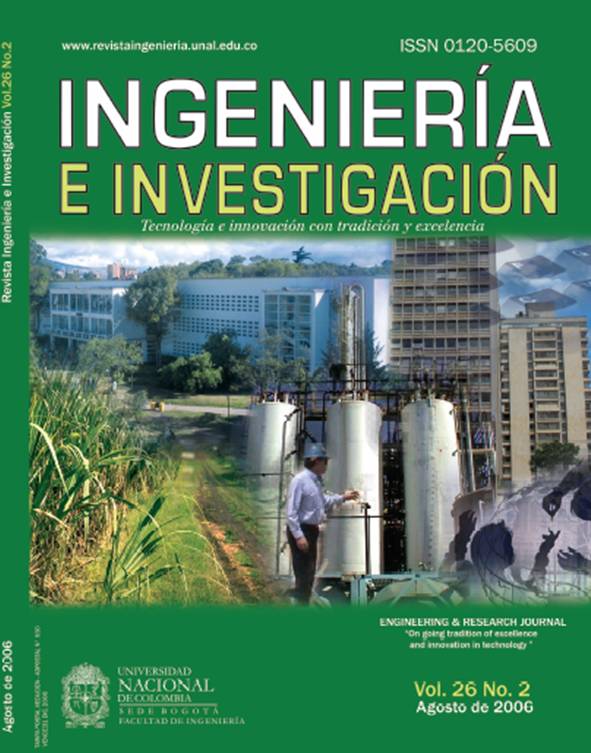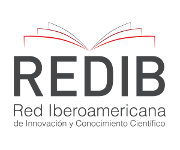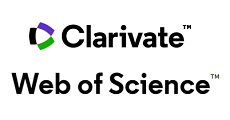Sorbent biomaterials for cleaning up hydrocarbon spills on soil and bodies of water
Biomateriales sorbentes para la limpieza de derrames de hidrocarburos en suelos y cuerpos de agua
DOI:
https://doi.org/10.15446/ing.investig.v26n2.14733Palabras clave:
sorbents, hydrocarbon absorbents and adsorbentes, hydrocarbon spills, spill cleanup (en)sorbentes, absorbentes y adsorbentes de hidrocarburos, derrames de hidrocarburos, limpieza de derrames (es)
Descargas
This study was aimed at identifying and evaluating natural organic materials which could be used as sorbents in clean-up operations following hydrocarbons spills on both soils and bodies of water. The sorption capacity of three materials (sugarcane fiber, coco fiber and water Eichornia crassipies was evaluated with three hydrocarbons (35°, 30° and 25°API) and two types of water (distilled and artificial marine water) adopting the ASTM F-726 standard and following the methodology suggested in the “Oil spill sorbents: testing protocol and certification listing programme” Canadian protocol. It was found that the three materials being evaluated had a sorption capacity equal to or greater than that of the commercial material to which they were compared. It was observed that sorption capacity results depended on some variables such as hydrocarbon viscosity, granulometry (particle size in Tyler sieve) and the structure of the material. Sugarcane fiber sorption in water showed the greatest hydrophobicity, different to Eichornia crassipies which is extremely hydrophilic. The materials’ sorption kinetics were determined and modelled with the three hydrocarbons (35°, 30° and 25°API). It was found that the materials became saturated in less than a minute, leading to a rapid alternative for cleaning-up and controlling hydrocarbon spills. Materials were also thermally treated for improving their hydrophobicity and behavior during spills on bodies of water. Sugarcane fiber was the material which presented the best results with the thermal treatment, followed by water Eichornia crassipies. Coco fiber did not present any significant change in its hydrophobicity.
Este estudio está encaminado a identificar y evaluar materiales orgánicos naturales que puedan ser utilizados como sorbentes en las operaciones de limpieza de derrames de hidrocarburos tanto en suelos como en cuerpos de agua. Se evaluó la capacidad de sorción de tres materiales: fibra de caña, fibra de coco y buchón de agua, con tres hidrocarburos: 35, 30 y 25°API, y dos tipos de agua: destilada y marina artificial, adaptando la norma ASTM F-726 y siguiendo la metodología sugerida por el protocolo canadiense “Oil Spill Sorbents: Testing Protocol and Certification Listing Program”.
Se encontró que los tres materiales evaluados tienen una capacidad de sorción igual o superior a un material comercial contra el cual fueron comparados. Se observó que los resultados de la capacidad de sorción dependían de algunas variables como la viscosidad del hidrocarburo, granulometría (tamaño de partícula en malla tyler) y estructura del material. En la sorción de agua, la fibra de caña fue la que mostró la mayor hidrofobicidad, a diferencia del buchón, el cual es bastante hidrofílico. Por otro lado, se determinó y modeló la cinética de sorción de los materiales con los tres hidrocarburos, 35, 30 y 25°API. Se encontró que los materiales alcanzan su saturación en menos de un minuto, lo que permite tener una alternativa rápida para la limpieza y control de derrames de hidrocarburos. Finalmente, se realizó un tratamiento térmico a los materiales con el fin de mejorar su hidrofobicidad y comportamiento en derrames sobre cuerpos de agua. La fibra de caña fue el material que presentó mejores resultados con el tratamiento térmico, seguido por el buchón de agua; la fibra de coco no presentó un cambio significativo en su hidrofobicidad.
Referencias
Ahmad, B., Seyed, A., Oil Spill Cleanup from Sea Water by Sorbent Material., Chemical Engineering and Technology, WILEY - VCH. Verlag GmbH & KGaA., No 12, 2005, pp. 28. DOI: https://doi.org/10.1002/ceat.200407083
Bergueiro, J. R., Contaminación Química a la Mar, Universidad De las Islas Baleares, España., Febrero, 2005.
Betz, M., A Simple Way to Eliminate Oils from Water., Spill Science & Technology Bulletin, Vol. 7, No. 5-6, 2002, pp. 319-320. DOI: https://doi.org/10.1016/S1353-2561(02)00069-5
ECOPETROL., Plan Nacional de Contingencia, Sistema nacional de equipos y expertos en control de derrames y escapes de hidrocarburos., Tomo I, Descripciones Básicas, 1996.
ECOPETROL., Los derrames de hidrocarburos y su manejo, un resumen., Asuntos Ambientales, Vicepresidencia de refinación y transporte, división técnica., 1999.
Edward, H. O., Response strategies for Spills on land. Spill Science & Technology., Vol 7, No. 34, 2002, pp. 115-117. DOI: https://doi.org/10.1016/S1353-2561(01)00059-7
Engineering Our Future., Slickbusters: Substances, Surfaces and Separations., Unit 3, 2000, pp. 1-99.
Ferrante, D., Sorption Processes., Groundwater Pollution Primer, Civil Engineering Dept., Virginia Tech, 1999.
Ghalambor, A., Composting technology for practical and sate remediation of oil spill residuals., University of Southwestern Louisiana, 1998.
Horst, U., Oebius; Physical Properties and Processes that Influence the Clean Up of Oil Spills in the Marine Environment., Spill Science & Technology Bulletin, Vol. 5, No. 3/4, 2003, pp. 177 -289. DOI: https://doi.org/10.1016/S1353-2561(99)00048-1
ICP, Los derrames de petróleo en ecosistemas tropicales, 2002.
INAGAKI., Michio Sorption and recovery of heavy oils using carbonized fir fibers and recycling, Elseiver, 2002. DOI: https://doi.org/10.7209/tanso.2002.16
ITOPF., The International Tanker Owners Pollution Federation, Ltd. 2006., Oil Tanker SIPI Statistics, 2005.
Lee, B-G, Han, J. S., y Rowell, R. M., Oil Sorption by Lignocellulosic Fibers., Capitulo 35, 2002, pp. 424-433.
Mc Kay, G., Use of adsorbents for the removal of pollutants from wastewaters., CRS Press. Department of chemical engineering, Hong Kong University of Science and technology, Kowloon, Hong Kong, 1996.
Origel-Gutiérrez, G. y Torres-Rodríguez, V., Mapa de amenaza de contaminación por derrames de hidrocarburos en una región tropical de México., Unidad de Geotermia, Instituto de Investigaciones Eléctricas (IIE), A.P 1-475, Cuernavaca, Mor., México, 2002.
Teas, Ch., Kalligeros S., Zanikos F., Stoumas S., Lois E., y Anastopoulos G., Investigation of the effectiveness of absorbent materials in oil spill clean-up., Spill Science &Technology Bulletin, Vol 8, 2003, pp. 259 - 264. DOI: https://doi.org/10.1016/S0011-9164(01)00375-7
Wei, Q. F, Mather, R. R., y Fotheringham, A. F, Oil removal from used sorbents using a biosurfactant, Southern Yangtze University, Wuxi, China. Elsevier Ltd, Febrero, 2005. DOI: https://doi.org/10.1016/j.biortech.2004.04.005
Westwick-Farrow Pty Ltd., Spill Control and the Correct Sorbent Selection., White papers - Waste Strems, 2005.
Cómo citar
APA
ACM
ACS
ABNT
Chicago
Harvard
IEEE
MLA
Turabian
Vancouver
Descargar cita
Licencia
Derechos de autor 2006 Diana Paola Ortíz González, Fabio Andrade Fonseca, Gerardo Rodríguez Niño, Luis Carlos Montenegro Ruiz

Esta obra está bajo una licencia internacional Creative Commons Atribución 4.0.
Los autores o titulares del derecho de autor de cada artículo confieren a la revista Ingeniería e Investigación de la Universidad Nacional de Colombia una autorización no exclusiva, limitada y gratuita sobre el artículo que una vez evaluado y aprobado se envía para su posterior publicación ajustándose a las siguientes características:
1. Se remite la versión corregida de acuerdo con las sugerencias de los evaluadores y se aclara que el artículo mencionado se trata de un documento inédito sobre el que se tienen los derechos que se autorizan y se asume total responsabilidad por el contenido de su obra ante la revista Ingeniería e Investigación, la Universidad Nacional de Colombia y ante terceros.
2. La autorización conferida a la revista estará vigente a partir de la fecha en que se incluye en el volumen y número respectivo de la revista Ingeniería e Investigación en el Sistema Open Journal Systems y en la página principal de la revista (https://revistas.unal.edu.co/index.php/ingeinv), así como en las diferentes bases e índices de datos en que se encuentra indexada la publicación.
3. Los autores autorizan a la revista Ingeniería e Investigación de la Universidad Nacional de Colombia para publicar el documento en el formato en que sea requerido (impreso, digital, electrónico o cualquier otro conocido o por conocer) y autorizan a la revista Ingeniería e Investigación para incluir la obra en los índices y buscadores que estimen necesarios para promover su difusión.
4. Los autores aceptan que la autorización se hace a título gratuito, por lo tanto renuncian a recibir emolumento alguno por la publicación, distribución, comunicación pública y cualquier otro uso que se haga en los términos de la presente autorización.


























